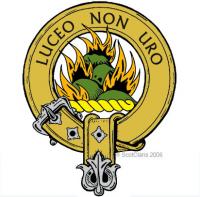
Clan MacKenzie
From the Gaelic "Maccoinneach" meaning "fair, bright one", the MacKenzies are thought to descend from the ancient royal house of Lorn. The clan held lands in Ross-shire, stretching from the Outer Hebrides in the west, to the Black Isle in the east.
The western stronghold of the clan MacKenzie was at Eilean Donan Castle at the mouth of Loch Duich. During the seventeenth century, the MacKenzies installed the clan MacRae as hereditary constables of the castle, and the MacRaes were to remain fiercely loyal to the family for many centuries.
For a clan who were of no particular consequence in ancient days, the MacKenzie clan achieved an exceptional degree of political eminence between the fifteenth and seventeenth centuries. They were resolute in their loyalty to the Stewart monarchy, and were rewarded for this when they were created Earls of Seaforth. This loyalty is symbolised in the clan motto "Cuidiche an righ" or "the king's tribute" and also in the appearance of a stag's head (a feudal gift to a king) in the chief's coat of arms.
The fourth Earl of Seaforth remained loyal to James VII, and even followed him to Ireland and France, where he died in exile. It was at this time that the famous prophecies of the Brahan Seer foretelling the downfall of the clan as a political force began to unfold.
However, the MacKenzie clan has gained eminence in other fields, one of the most notable being literature. John MacKenzie was the author of "Beauties of Gaelic Poetry", which has been hailed as the finest Gaelic anthology ever written, and W.R. MacKenzie is noted as a famous historian.









